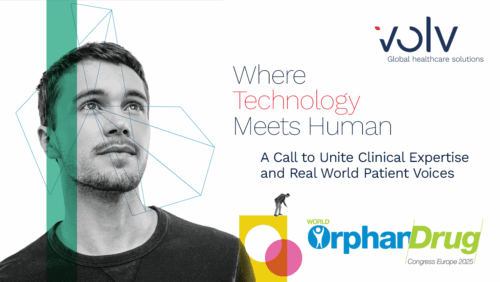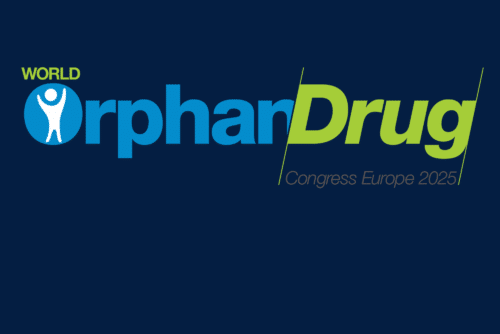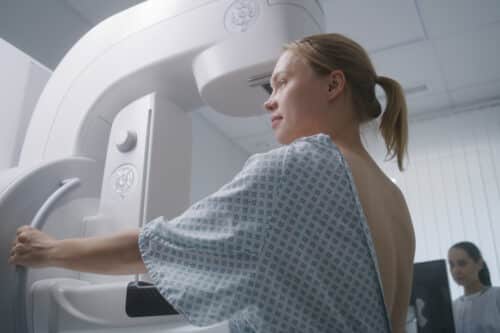By Léon Van Wouwe, Clinical Innovation Director, Volv Global
A Hidden Cancer in Plain Sight
Multiple myeloma (MM) has long been described as an “elusive” cancer. Unlike acute leukæmias or aggressive lymphomas, its onset is subtle, frequently disguised by nonspecific symptoms: bone pain attributed to arthritis, fatigue mistaken for aging, or anæmia blamed on nutritional deficiencies. The result is that many patients are diagnosed only after substantial organ damage has already occurred. Studies show that around half of MM patients experience a diagnostic delay of more than three months, with some presenting for the first time in emergency settings when complications such as renal failure, spinal fractures, or hypercalcemia have already developed [1, 2].
The International Myeloma Working Group (IMWG) has tried to move the field forward by incorporating biomarker-based criteria into diagnostic guidelines – allowing for earlier detection before the classic “CRAB” (hyperCalcemia, Renal dysfunction, Anemia, Bone lesions) features appear [3]. Yet, outside of specialist centres, these refinements are inconsistently applied. General practitioners remain the first point of contact, and systemic barriers – from referral bottlenecks to lack of routine paraprotein testing – mean that opportunities to catch disease earlier are often missed.
The Weight of Delay: Consequences for Patients
Diagnostic delay in MM is not a benign oversight. Late presentation is directly linked to worse outcomes: higher incidence of irreversible bone destruction, increased dialysis dependence due to kidney injury, and reduced overall survival [4]. Patients diagnosed earlier, before organ damage sets in, have significantly better progression-free survival when started on modern therapies. The window between monoclonal gammopathy of undetermined significance (MGUS) or smoldering myeloma and overt MM could be leveraged for proactive management … but only if patients are identified.
Moreover, delays limit access to cutting-edge therapies. CAR T-cell treatments such as idecabtagene vicleucel and ciltacabtagene autoleucel, or bispecific antibodies like teclistamab, have transformed survival expectations in relapsed/refractory disease. However, these therapies require adequate bone marrow reserve and organ function. By the time many patients reach tertiary care, they may already be ineligible due to the very damage caused by diagnostic delay.
A Golden Era of Therapies – With a Catch
The treatment landscape for MM has expanded dramatically. Immunomodulatory drugs (lenalidomide, pomalidomide), proteasome inhibitors (bortezomib, carfilzomib), and anti-CD38 antibodies (daratumumab, isatuximab) form the backbone of current regimens. Recent years have ushered in an immunotherapy revolution:
- CAR T-cell therapies (ide-cel, cilta-cel) demonstrate deep and durable responses in heavily pre-treated patients.
- Bispecific antibodies (teclistamab, elranatamab, ABBV-383) offer “off-the-shelf” alternatives, harnessing T-cells without bespoke cell engineering.
- Antibody-drug conjugates (belantamab mafodotin, and pipeline agents like HDP-101) bring targeted cytotoxic payloads directly to myeloma cells.
- Next-generation targets beyond BCMA, such as FcRH5 (cevostamab), are being explored to overcome relapse after BCMA-directed therapy.
Yet the paradox remains: science is racing ahead, but health systems are stumbling behind. Cutting-edge treatments cannot reach their full impact if patients continue to arrive late in the disease trajectory.
Health System Readiness: Where the Gaps Lie
- Primary care awareness and referral delays
Most MM patients begin their diagnostic journey in primary care. General practitioners often see only one new MM case every few years. Without high suspicion, bone pain is coded as musculoskeletal, anæmia as iron deficiency, or fatigue as depression. As a result, patients may cycle through multiple consultations before a hæmatology referral [5]. - Limited access to diagnostic tools
Key tests – serum protein electrophoresis, immunofixation, and free light chain assays – are not consistently ordered in early workups. Even when ordered, interpretation may be challenging outside hæmatology expertise. Imaging availability is another constraint: advanced modalities such as whole-body MRI or PET-CT, which can detect bone involvement earlier than plain X-rays, remain unevenly deployed. - Underutilisation of biomarker-driven criteria
Although the IMWG has endorsed biomarker thresholds (e.g., ≥60% plasma cells in marrow, light chain ratio >100) as diagnostic triggers, these are rarely applied in general practice. Consequently, the shift from “damage-based” to “biology-based” diagnosis has not yet been fully realised in real-world care. - Fragmentation of care pathways
Even once diagnosed, patients may face delays accessing tertiary centres that can deliver CAR T-cell or bispecific antibody therapies. Capacity constraints – limited manufacturing slots, specialised centre accreditation – compound inequities in access.
How AI Can Bridge the Diagnostic Gap in Myeloma
Artificial intelligence (AI) offers a critical opportunity to close the chasm between therapeutic innovation and real-world implementation in multiple myeloma. By harnessing vast, heterogeneous datasets – including electronic health records, laboratory test trends, imaging results, and prescription histories – AI algorithms can flag subtle patterns that signal early or evolving myeloma long before overt CRAB features manifest.
For instance, repeated reports of anæmia, unexplained renal impairment, or persistent back pain captured across primary care records could be algorithmically triaged for follow-up testing. Similarly, abnormal protein signals from routine laboratory panels could trigger automated alerts for serum electrophoresis or free light chain assays. In this way, AI functions as a digital safety net, surfacing patients who might otherwise fall through diagnostic cracks.
The implications for clinical development are equally significant. Faster identification of earlier-stage patients could accelerate recruitment into trials exploring intervention in high-risk smouldering myeloma or biomarker-defined disease. Regulators and payers, in turn, would gain the real-world evidence needed to support label expansion and reimbursement for earlier-line therapies.
One can envision regional pilots in which health systems deploy AI models integrated with laboratory networks and primary care. Patients flagged as high-risk could then be funnelled into dedicated “myeloma fast-track” clinics for confirmatory diagnostics and, where appropriate, trial enrolment or early treatment programs. Such infrastructure would not only enhance patient outcomes but also ensure that the extraordinary advances in immunotherapies – from CAR T-cell products to bispecific antibodies – are delivered to a broader, more eligible population.
Ultimately, AI is not a replacement for clinical acumen but an amplifier: a tool that can bring hidden disease into view earlier, enabling clinicians and health systems to act before irreversible damage occurs.
Bridging the Innovation-Implementation Gap
Closing the gap between therapeutic innovation and real-world outcomes requires more than new drugs. It demands systemic reform:
- Education and awareness: training programs for primary care physicians must emphasise early myeloma suspicion, particularly in patients with unexplained anæmia, persistent back pain, or renal impairment. Decision-support algorithms embedded in electronic health records could prompt timely paraprotein testing.
- Diagnostic infrastructure: wider availability of serum free light chain assays, immunofixation, and advanced imaging should be prioritised. National health systems could incentivise labs to implement reflex testing protocols when abnormal protein patterns are detected.
- Pathway integration: establishing streamlined referral pathways from primary care to hæmatology clinics can reduce diagnostic lag. Some regions have piloted “myeloma fast-track” clinics, modelled after rapid-access lung cancer pathways, with promising results.
- Biomarker adoption: ensuring that the IMWG’s biomarker-based diagnostic thresholds are widely disseminated and reimbursed would enable earlier initiation of therapy – before end-organ damage accrues.
- Capacity planning for advanced therapies: CAR T-cell and bispecifics require specialised infrastructure. Policymakers must anticipate demand and expand accredited centres, workforce training, and manufacturing capabilities to prevent bottlenecks that leave patients untreated.
Recommendations for Stakeholders
- Clinicians: maintain a high index of suspicion in patients with persistent, unexplained systemic symptoms. Use low thresholds for ordering serum electrophoresis and light chain assays. Advocate for rapid referral if abnormalities are found.
- Policymakers and payers: fund early-detection initiatives, expand diagnostic capacity, and incentivise adoption of biomarker-based criteria. Invest in scaling CAR T/bispecific infrastructure to prevent inequitable access.
- Healthcare systems: develop integrated care pathways that reduce diagnostic handoffs and delays. Pilot population-based screening in high-risk groups (e.g., individuals with MGUS, family history, or certain ethnic predispositions) to test feasibility of earlier interception.
Looking Ahead: From Late to Early Myeloma
Multiple myeloma exemplifies the paradox of modern oncology: breathtaking therapeutic innovation constrained by systemic diagnostic inertia. The tools exist to transform outcomes – from immunotherapies capable of deep remissions to refined biomarker criteria for earlier detection. But unless health systems evolve to diagnose patients before irreversible damage, the promise of these therapies will remain only partially fulfilled.
The next frontier in myeloma is not simply another breakthrough drug. It is the creation of diagnostic and referral systems that recognise this cancer sooner, connect patients swiftly to expert care, and thereby allow the full weight of scientific progress to benefit those who need it most. AI will play a pivotal role in that future – shifting myeloma care from reactive salvage to proactive interception.
About the author
Léon van Wouwe has 20+ years’ global experience in clinical development and operations, uniting data science with pharma and research. He drives cross-functional collaboration to advance innovative treatments.
References
- Smith, L., Carmichael, J., Cook, G., Shinkins, B. & Neal, R.D. (2022) ‘Diagnosing myeloma in general practice: how might earlier diagnosis be achieved?’, British Journal of General Practice, 72(723), pp. 462-463.
- Hossain, M.I., Hampson, P., Nowell, C., Khan, S., Sen, R., Sundararaman, S., Adiyodi, J. & Basu, S. (2021) ‘An in depth analysis of factors contributing to diagnostic delay in myeloma: a retrospective UK study of patients’ journey from primary care to specialist secondary care’, Blood, 138(Suppl 1), p. 3007.
- Rajkumar, S.V., Dimopoulos, M.A., Palumbo, A., Blade, J., Merlini, G., Mateos, M.V. et al. (2014) ‘International Myeloma Working Group updated criteria for the diagnosis of multiple myeloma’, The Lancet Oncology, 15, pp. e538–e548.
- Kariyawasan, C.C., Hughes, D.A., Jayatillake, M.M. & Mehta, A.B. (2007) ‘Multiple myeloma: causes and consequences of delay in diagnosis’, QJM: An International Journal of Medicine, 100(10), pp. 635–640.
- Koshiaris, C., Van den Bruel, A., Oke, J.L., Nicholson, B.D., Shephard, E., Braddick, M. & Hamilton, W. (2018) ‘Early detection of multiple myeloma in primary care using blood tests: a case–control study’, British Journal of General Practice, 68(674), e586–e593.
Links:
Photo by FatCamera on iStock.










